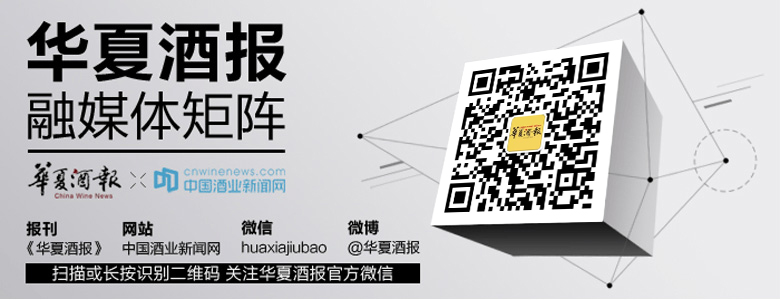Chinese and international wine professionals gathered en mass in Shanghai for an Asia-first – the Skin-2-Skin: Orange Wine Symposium, a four-hour event led by the world’s global experts on the topic, exploring the origin, development and diversity of orange wines, as well as the position and potential of this category in the China market.
Attended by 100+ guests (wine professionals and media), the three-part symposium was booked out well in advance, with observer seating only, showing the incredible interest in this trending category, as well as the desire to meet some its global stars and most renowned local experts.
The event was launched by Master of Wine Debra Meiburg, followed by official welcomes from the Minister of Environmental Protection & Agriculture of Georgia, Mr Otar Shamugia; Peter Schmitz, Director of ProWein; and Irakli Cholobargia, Advisor to the Chair, National Wine Agency. As the “birthplace of wine” the event held special significance to the Georgian wine community, with 17 members of the official government and trade delegation attending the event.
Session 1 was a “deep dive” into the history, evolution and revolution of orange wines. This was presented by keynote speaker, author of Amber Revolution: How the World Learned to Love Orange Wine, Simon J Woolf, widely acknowledged as the global expert on orange wine.
Simon explained that the ancient roots of orange winemaking – in fact, all winemaking - were in Georgia, but that this 8000-year old continuous tradition was overshadowed by mass produced wine to supply the thirsty Russian market during Soviet period. As such, almost no orange wine left Georgia, as it was typically made and consumed in almost every home in the countryside.
Meanwhile in northern Italy in the 1980s and 90s, where industrialized winemaking was booming, several pioneers (including Josko Gravner and Stanko Radikon) were experimenting with traditional winemaking methods of skin maceration wines (aka orange wines). As were some of their Slovenian counterparts across the border. Simon explained that these highly regarded, yet somewhat “rogue” winemakers visited Georgia in the early 2000s and encountered first-hand Georgia’s ancient “amber” winemaking in qvevri (large clay amphora buried underground) and were fascinated. They returned home with inspiration to hone this craft of orange winemaking.
On the other hand, back in the Caucasus, buoyed by this international interest and knowledge-sharing, amber winemaking in Georgia entered a new phase, with pioneers like Iago Bitarishvili and others bottling these wines and starting small, but commercial production for the first time. Simon explained this has inspired a new generation of traditional winemaking in Georgia, “the birthplace of wine”, which is now thriving.
Simon explained to the audience how avant-guard winemakers in Austria followed, creating a whole new category of wines, with a distinct fresh style favoured by many. Orange winemaking has since been embraced across the vast majority winemaking countries, albeit in mainly small numbers.
Along with sharing the history and development of the category, Simon’s summary of orange wines simplified the concept to audience members, showing it not to be just a fad, but an ancient, essential piece of the winemaking story that was somewhat “forgotten” over time.
Simon explained “We have red wine, made with red grapes with skin contact. We have rosè wine, made with red grapes but no skin contact. We have white wine, made with white grapes with no skin contact. It is only natural that we have orange wine, made with white grapes with skin contact.”
Session 2 saw three winemakers, including pioneer Georgian winemaker Iago Bitarishvili, who has gained cult status in the orange wine world, discuss the various techniques of orange winemaking, and how factors like length of skin contact, aging, and other winemaking techniques contribute to the range of styles in orange wines.
Two wines were tasted to demonstrate the effect of skin contact. Both wines were from Georgia and made from the grape Kisi. One was made in stainless steel as a fresh, aromatic style of white wine. The other, with six months skin maceration and made in qvevri.
Debra Meiburg MW said, “The differences were marked. The conventional style Kisi was lean, brisk and lightly perfumed – an easy-drinking wine for appetisers or light seafood. On the other hand, the qvevri, orange Kisi paraded opulent fruits, such as ripe apricots, peaches and mango, alongside its invigorating acidity and powdery tannins. This is typical of a Kakhetian Georgian amber wine made in qvevri, but tasting the two side-by-side really showed the audience that skin maceration gives additional fruit flavours and heft to wine.
“Sadly, these phenolic elements are normally lost when skins are discarded. The significance? Orange wines are an important wine style that deserves a seat at our dinner tables.”
Session 2 then moved to an analysis of orange wine in the Chinese market. Three expert panelists from China – Julien Boulard MW, Xiao Pi Xu and Fei Fei Liu – agreed there was immense potential for the category in China, particularly in Shanghai, where the style is already flourishing across the city’s many wine bars and bistros.
Xiao Pi Xu, Wine Educator and Influencer, who has also seen great success in selling orange wines in a range to styles to his online community, said, “The key is not to underestimate the curiosity and the open mindedness of the Chinese consumer. Despite what many may think, they don’t have to get used to white or red wine before embracing orange wine. In my opinion, orange wine is now a MUST in the portfolio – whether you are an importer or a distributor.
“We need all kinds of good quality wine - different aromas, flavours, texture, length and food and wine matching abilities. Selling wine in China is just like running a buffet. You never know what people want but we want to cater to many tastes so people may discover their new favourites.
“Finally, we don’t need to specifically emphasise or get tied up in the fact that it is an orange wine. We still need to talk about quality and how the aroma, flavour and length differ from the wine of the same price point.”
Julien Boulard MW pointed out that separating “natural” from “orange” is also important. While there are many natural wine lovers in China, there are many that favour conventional wines. “Sommeliers and consumer need to understand that orange wines can be natural or conventional. Natural is a philosophy, but orange is a category – just like red, white and rosè. We see many natural orange wines around, as many natural producers favour ancient techniques that were traditionally used to make orange wine, particularly in Georgia. But I believe we will see more and more conventionally-made orange wines, as global winemakers realise the legitimacy and diversity of the category.”
Session 3 saw the tasting and discussion of 22 orange wines from 11 different countries, showcasing a comprehensive cross-section of styles and a breadth of winemaking techniques that exist in this category.

